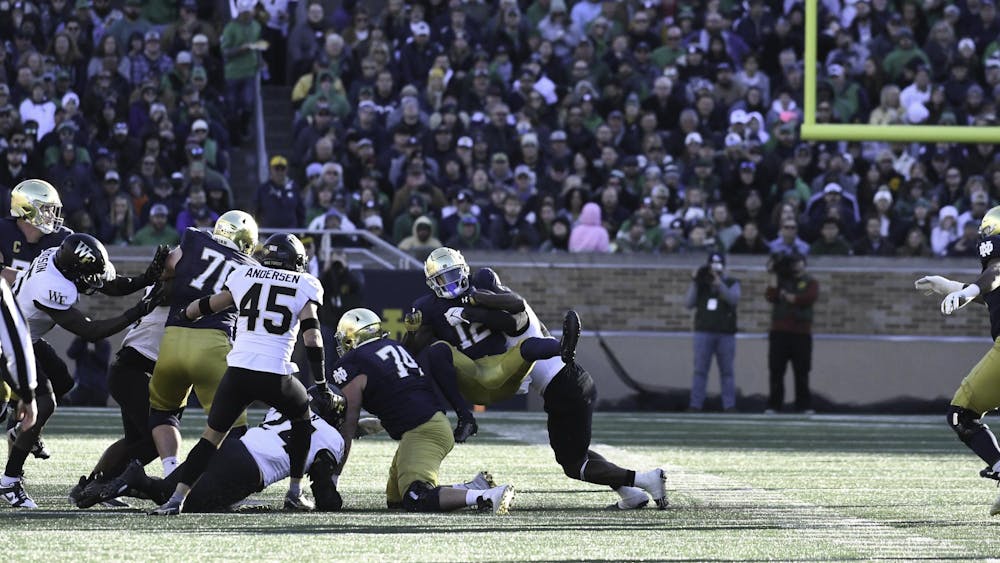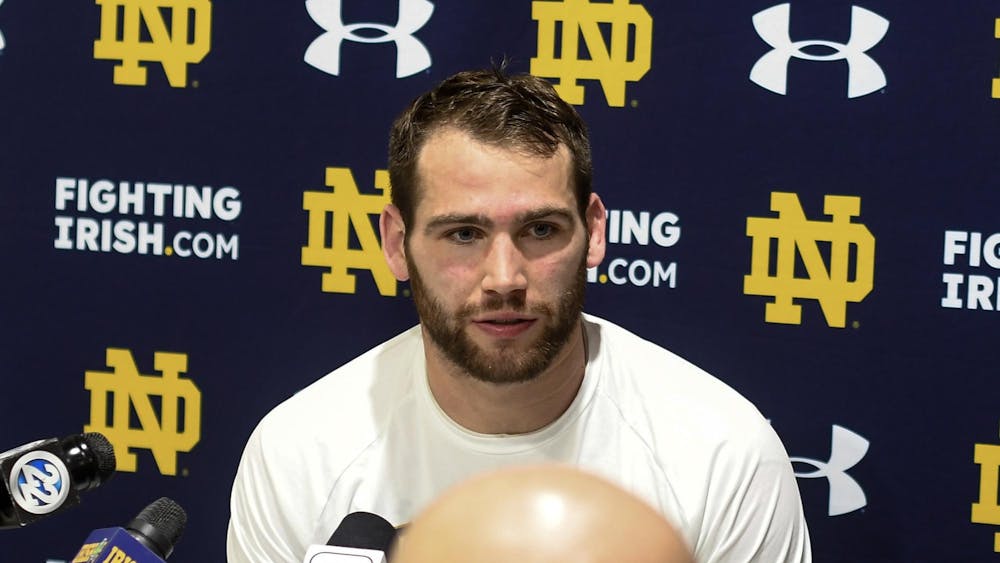Any member of the Irish women's tennis team will tell you that doubles matches play a huge role in determining the winner of a dual match.
The problem? Most freshmen enter college with almost no doubles experience.

"Most of the juniors — the ones that play in national tournaments in the summer — have no clue how to play doubles," Irish coach Jay Louderback said. "They don't play it in tournaments and they never work on it in practice. And they go out and basically two people play singles together. Some come in with some knowledge of doubles, but a lot of them, they have to learn when they get into college."
Irish junior ChrissieMcGaffigan was one of those who had to learn how to play doubles after arriving at No. 21 Notre Dame (4-1, 1-0 Big East).
"Before coming to Notre Dame, I did not have much doubles experience," McGaffigan said. "Our coaches have taught us the tactics of playing doubles, so my doubles play has improved a lot."
Louderback estimates that the team spends up to a third of its practice time on doubles, which in the collegiate ranks features three pairings. The point goes to the first school that has two teams win eight games.
"College doubles is good — it's so much better than juniors and a lot of it is because most schools do put quite a bit of time into the doubles," Louderback said. "There's a few that don't, that feel like if they can work on singles, they can win four singles matches and win the match, but most do."
The first thing newcomers must learn is that singles and doubles are essentially different games, Louderback said.

"A lot of the time, singles is just people hitting the ball as hard as they can, and in doubles you can't do that," Louderback said. "It uses a little more touch than they're used to. You have to be able to hit topspin lobs, offensive lobs.
"When your opponent's coming into the net, it doesn't have to be hard. It's more important to get the ball down at their feet, because if you hit hard they just use your pace when they volley."
Louderback also said that many players who are used to singles have to relearn how to position themselves in doubles matches.
"The biggest [mistake] is just not really knowing where they should be — where to move, when to move when you're at the net, where to serve to," Louderback said.
In addition to helping rookies adjust to a new version of a familiar game, the coaches have to decide which players best complement each other's style of play.
"The best doubles teams have one person that hits the ball big and hard and one person that doesn't miss, that's more consistent," Louderback said. "The problem is if you get two players that both hit the ball hard but make errors. If neither one of them is on they can be really bad. They can be really good, or they can be really bad."
McGaffigan said that she and her partner, sophomore Jennifer Kellner, fit the first description of a successful duo.
"Jen [Kellner] and I have much different styles of play. She has a huge baseline game so our styles mesh well together," McGaffigan said. "She has such a killer backhand that it sets me up for poaches at the net."
McGaffigan said their relationship extends beyond the court.
"Jen and I are really close, so I think that our relationship, it carries over to our tennis play," McGaffigan said. "The best part about playing doubles is getting to spend a whole eight game pro set with her. Jen is a ferocious competitor, so I love having her on my side of the tennis court."
Louderback said this type of friendship is common among doubles partners.
"We've had kids that played together for two and three years, and they end up very close," Louderback said. "They not only spend normal practice time together, but doubles practice as well. You can see kids that have played doubles together, especially ones that have played well together, they become very close for sure."
Contact Vicky Jacobsen at vjacobse@nd.edu












